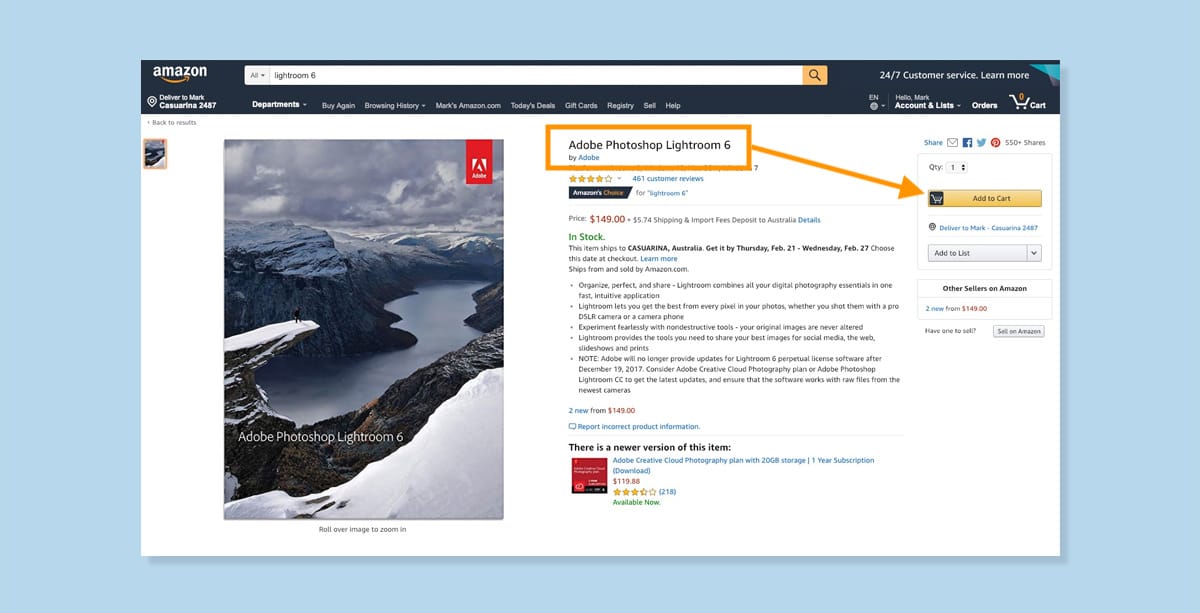

- RECOVER ADOBE LIGHTROOM SERIAL NUMBER HOW TO
- RECOVER ADOBE LIGHTROOM SERIAL NUMBER FULL
- RECOVER ADOBE LIGHTROOM SERIAL NUMBER ISO
- RECOVER ADOBE LIGHTROOM SERIAL NUMBER SERIES
- RECOVER ADOBE LIGHTROOM SERIAL NUMBER FREE
Click on the one on the far right, the Adjustment Brush, and then find the slider labeled Noise.
RECOVER ADOBE LIGHTROOM SERIAL NUMBER SERIES
Underneath the histogram is a series of icons. In Lightroom, make sure you're working in the Develop module. My preferred solution is to use the Adjustment Brush. It takes more time, but it gives you selective control while applying adjustments. The Radial Filter, the Gradient Filter, and the Adjustment Brush have a slider that will allow you to adjust the noise in only the areas where these tools take effect. Many times, noise is most apparent in low-detail background areas, so there's no need to increase the detail in those areas further. The balance consists of applying detail enhancements that enhance only certain parts of the image. If you add detail with sliders like Clarity and Sharpness, the noise increases in lockstep.If you apply Noise Reduction, you lose detail as Lightroom smooths the image.Reducing noise is always a balancing act: Selective Noise Reduction in Lightroom With the Adjustment Brush The Details slider is ineffective-you can leave it alone. Move it up only until the noise disappears. Again, under Noise Reduction, the Color slider works by desaturating the shadows. It shows up as blotches, most prominently in shadow areas. This kind of noise consists of pixels that have reacted to the wrong color. This photo's sense of motion means that I can reduce the noise without adding a noticeable amount of smoothing. It's better to just accept a little noise. Use the Contrast slider only with extreme noise. In areas of fine detail, slide back the Luminance slider until the detail returns.

Slide back the Details slider until the artifacts disappear.Under Noise Reduction, set the Details to 100%.Find the Detail panel on the right side and scroll down to find Noise Reduction.Luckily, Lightroom handles this kind of noise well. It's the pixels that have misfired to the wrong tone (of greyness). Luminance noise is tonal: it's perceived in the shadows and darkest parts of an image. In this part of the tutorial, we'll deal with noise that's present in the entire image. This is Lightroom's workspace for making visual adjustments to an image. Start by switching to the Develop module. Global (Whole-Image) Noise Reduction in Adobe Lightroom Make sure that you zoom in to 100% so that you don't remove too much detail from your subject. When you're applying noise reduction, it's essential to view your image at a variety of zoom levels. One way to manage this "byproduct noise" is to apply adjustments selectively. Here are a few sliders to work with carefully in already noisy photos:

Most of these live on the Detail panel.Īny slider that increases detail is sure to enhance the presence of noise. You might notice as you increase specific sliders that your noise increases too.
RECOVER ADOBE LIGHTROOM SERIAL NUMBER HOW TO
Let's learn how to reduce it while post-processing an image in Adobe Lightroom.
RECOVER ADOBE LIGHTROOM SERIAL NUMBER ISO
Camera sensors keep improving, but noise is still unavoidable, particularly at high ISO settings.

RECOVER ADOBE LIGHTROOM SERIAL NUMBER FULL
The inset part of this image at 100% shows the full effect of grainy noise at high ISO settings. This creates noise in high-ISO situations. It's most noticeable in the darkest areas of photos, like the shadows in nighttime photography.Īs you increase the ISO (sensitivity) setting, you're asking your camera to interpret more information from the signal (light) that it's getting.
RECOVER ADOBE LIGHTROOM SERIAL NUMBER FREE
Lightroom Classic Tutorial for Beginners | FREE COURSEĭigital noise is the grainy, dotted texture that you've likely seen in photos.


 0 kommentar(er)
0 kommentar(er)
